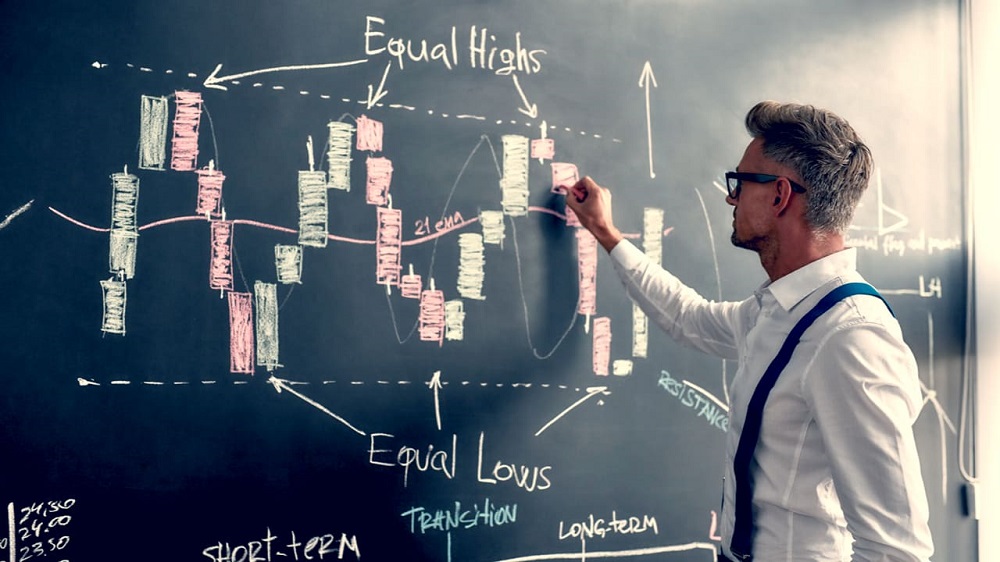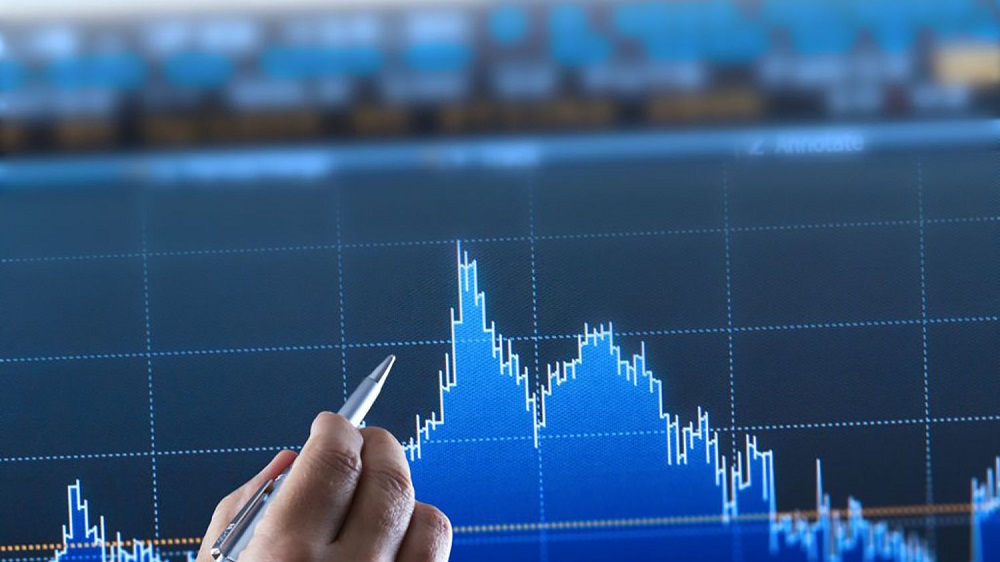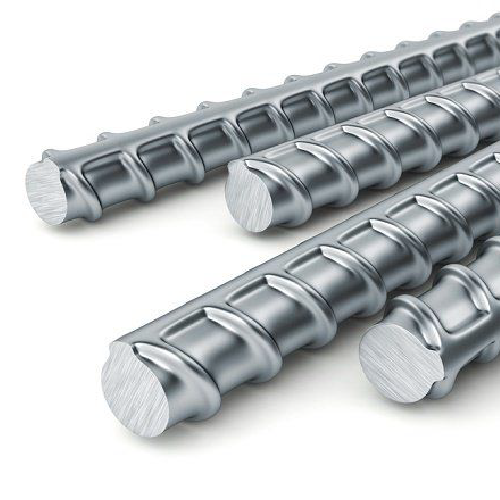
Planning a Successful Long-Term Forex Strategy
LEARN FOREX TRADING
Why Is a Long-Term View Important?
- What Are the Benefits of Long-Term Forex Trading?
- Top Tips for Trading Long Term
- Change Your Mindset
- Set a Profit Target and Stop Loss
- Have a Strategy and Stick to It
- Look at Weekly Charts and Trends
- Use Very Small (Or No) Leverage
- Swing Trading
- Factor in Your Costs
- Final Thoughts
Many forex traders find success using long-term trading strategies. Taking a long-term approach, also referred to as ‘big picture’ forex trading, involves keeping hold of a transaction for a long period while considering all the factors that affect a currency pair.
With the right planning and execution, one long-term position can be more successful than several short-term positions. When it comes to forex strategy, ‘long term’ refers to trades that can go on for days, weeks, months or even a year or more.
This method is sometimes known as positional trading, as it involves holding one position for an extended term.
Although long-term trading strategies can be lucrative, they probably suit a certain personality type that is willing to be patient and forgo the excitement of short-term trading.
Why Is a Long-Term View Important?
Although short-term trading (such as scalping) in forex is popular due to its reputation for fast profits, a long-term view is essential for correctly assessing data (technical analysis) and economic conditions (fundamental analysis).
A longer-term view is important when looking at forex charts, as viewing over a longer time-scale will reveal more about upward and downward trends, rather than short peaks or troughs in hourly charts which could be misleading.
Fundamental analysis involves the monitoring of economic/political factors, interest rates, employment and the monthly Consumer Price Index (CPI) for the countries associated with currency pairs. Looking at these factors with a long-term view can help you ride out market volatility.
What Are the Benefits of Long-Term Forex Trading?
There are many strategies that forex traders can take but playing the long game has its own unique benefits:
- Less stressful – As the position is held over an extended time, the small and fast changes seen on a daily basis are not particularly consequential – certainly not in the way they are for short-term trading. This makes a long-term forex strategy less stressful overall.
- Less risk – Managing multiple long-term positions can bring in a more stable income and the trader is better able to monitor, predict and act upon changes within the market. Especially good for volatile markets, the trader can weather the short storms for the longer-term gain, often meaning less risk is involved.
- Time-saving – Long-term trading strategies are less time-consuming than short-term ones, as there is no need for the trader to be at a computer for long periods. Initially, the trader must spend time tracking the markets and evaluating market forces before committing to a trade, but can then take a step back as they ride out market movements for an extended time.
- Investment requirements can be lower – In a short-term trade, the aim is an increase of, say, 20 pips (percentage in points; the percentage of change in a currency pair). In a long-term trade, a trader can target 200 pips or even more. The initial investment can pay off tenfold if the trader is prepared to go for a long strategy.
- Stop losses tend to work better on longer trades – On a short trade, once a stop loss is activated, the trade ends, resulting in losses. On a longer-term position, there is room for the market to experience short-term spikes and dips and then have the time to recover again with no stop loss trigger. The trade can then continue on its planned trajectory.
- Long-term trends can be profitable – Careful tracking of all the economic and geopolitical factors involved over a significant period (months or even a year) can result in huge wins for forex traders. Perhaps the most well-known example is that of George Soros who carefully observed the British trying to fight against market forces by fixing their exchange rate in the face of joining Europe’s Exchange Rate Mechanism (ERM) in the early 1990s. Predicting its failure, Soros heavily shorted the British Pound in 1992, pocketing $1 billion in the process. Playing to macro trends in this way is the perfect long term forex strategy.
- Avoidance of spread costs – The spread is the difference between how much you can buy the base currency for compared to how much you can sell it for. Non-commission brokers use the spread to make money. The cost is built into the trade and it is incurred for every trade that is placed. For short-term traders, the spread is a frequent cost that must be considered when planning and strategizing. In contrast to this, if a long-term trader is running only one trade over a long period, the spread becomes negligible in the grand scheme of things.
The Best Trading Platforms
Let’s take a look at the best trading to earn more.
1. Liteforex
Best for: Learning from others
Liteforex is one of the most popular online reliable brokers over the world. Over the past 15 years, it has developed a strong reputation for beginners and experienced investors alike, has a minimum $100 deposit.
The Liteforex app aims to use easy for every clients. It is available on Google Play and the App Store and allows you to move seamlessly between devices.
It’s innovative features include:
- Pre-programmed one-click trading
- Copy Trader – Copy the trades of others in real-time
- Its own social networking platform
- Pre provided investment strategies which they call Copy Portfolios
The app boasts the ability to allow you to place online trades even if the trading platform is down.
The information is being presented without consideration of the investment objectives, risk tolerance, or financial circumstances of any specific investor and might not be suitable for all investors.
2. FXTM
The FXTM Platform itself is intuitive and easy to use, suitable for those just getting into trading and those more experienced alike.
It is designed to offer a full replication of an institutional trading environment including depth of market.
With advanced risk management and order functionality, this is a detailed platform for trading stocks.
The FXTM app offers a premium range of order types, with advanced technical analysis tools.
You can set up push and email notifications for the important things that you want to know in relation to your stock trading needs – such as price alerts and trade statistics.
Within the app, you can:
- Complete a range of order types
- Work with all your accounts in one app
- Understand detailed trade analysis
- Review detailed order tickets – base currency dollar value and pip distance
As a platform, there are comprehensive educational videos and explanations of symbols, so you can find optimized processing for expert advisors and indicators.
The information is being presented without consideration of the investment objectives, risk tolerance, or financial circumstances of any specific investor and might not be suitable for all investors.
3. FBS
Best for: CFDs
This app is designed for those wanting to trade outside of the US. It is considered one of the best for CFDs on shares and has a minimum $100 deposit.
There are low trading fees but considerable fees for inactive users.
The educational section is average, as are the research tools. However, the app is easy to use overall.
This app is recommended for those familiar with CFDs and who are actively trading. Reviews of the app show that users like the:
- Account-opening process
- Deposit and withdrawal features
- Customer service
- Actual trading platform
The information is being presented without consideration of the investment objectives, risk tolerance, or financial circumstances of any specific investor and might not be suitable for all investors.
Top Tips for Trading Long Term
Change Your Mindset
For many forex traders, the buzz of the trade is a huge motivating factor and the high frequency of short-term trades provides a constant thrill. Taking the long-term approach is seen by some as a slower and duller trading experience.
If a trader can get past this perception and mental block, there is a profit to be had.
It is widely acknowledged that psychological factors play a big part in trading in general. Greed, fear, overconfidence and disappointment can all come into play and the more time spent in front of the trading screens, the more likely that emotional and psychological factors will affect decision making.
A long-term trader negates some of this by having to spend less time actively trading. A well informed long-term trader has prepared for market variants and accepts that a volatile market will see significant changes throughout the course of a trade. This means that the process can become less emotive and more transactional.
Set a Profit Target and Stop Loss
A profit target is a predetermined upper level at which a trader will close a trade. It is the opposite of a stop loss, which is the lowest point of pips from the entry price that a position can drop to before the trade is closed.
Both these limits provide sensible boundaries and prevent heavy losses incurred by emotional trading. It can be very tempting for an investor to hold their nerve when the market peaks, waiting for a continuation in the upward trend, but, inevitably, the trade comes crashing back down with devastating losses.
A profit target exits the trade before this happens, making sure that the trade has a successful outcome as the market peaks.
Have a Strategy and Stick to It
A successful long-term forex strategy relies on thorough research and a clear plan. Although the plan can be adjusted as the trade progresses, sticking with it ensures that decisions are made based on facts and trends rather than on emotion.
Although it sounds obvious, many factors come into play with every trading decision made and it’s very easy to deviate from the strategy, especially one being held over several days or months.
Before making any move, a trader should assess whether it’s part of the plan, what’s driving the decision and what is likely to happen as a result. Referring back to the initial strategy allows the trader to step back and make a cool-headed decision.
Look at Weekly Charts and Trends
Checking daily charts can be very tempting, but in a long-term trade, daily changes are not particularly significant. Weekly charts give a clearer long-range view of what the markets are doing and any trends that are emerging.
Trends over a weekly time scale are larger and more significant in general. Reviewing the charts weekly also prevents a trader obsessively checking throughout the day, allowing for better time management and a more rational approach.
Use Very Small (Or No) Leverage
Leverage (controlling a large amount of money using little of your own and borrowing the rest) is an important tool in a forex trader’s toolbox. Although the higher the leverage, the higher the potential profit, it can also work the other way and generate substantial losses.
For a short-term trade where positions are relatively small, more leverage may be desirable. For a long-term position, the increased pips involved mean that high leverage can be catastrophic if the trade goes wrong. For this reason, high leverage is neither desirable nor necessary in long-term trading strategies.
Swing Trading
Not every long-term position has to be over a course of weeks or months. A position held for more than a day can be considered long term when in comparison, many short-term trades last a matter of minutes.
One forex strategy to implement over a day or a few days is swing trading. Swing trading involves holding a trade for several days at a time, observing the price swings and exiting on an upward trend.
This method is ideal for an investor who doesn’t want to trade throughout the day but who can observe the market once a day and can hold their nerve before acting. Waiting for the swing that occurs over a few days usually brings bigger results than short-term day trades.
Factor in Your Costs
Long-term trading can incur different costs that need to be factored into planning, namely swap and rollover.
Rollover is the net cost of holding the position overnight. End of day is officially 17:00 EST which is 21:00 UTC. If a position remains open at this time, rollover costs will apply. It’s not always a straightforward calculation, however, as holding a trade overnight can incur costs but it can sometimes generate a net return, depending on the interest rates of the currencies involved. This is known as swap.
Understanding the rollover and swap costs are important in planning long-term trading strategies.
Final Thoughts
Long-term trading strategies can certainly pay off. They require a very different approach to short-term trading and present their own challenges as well as benefits.
If a trader can forgo the exciting and fast-paced nature of short-term day trading, they can certainly gain from a measured approach. Taking a step back and studying the various factors that affect a country’s currency fluctuations can improve general trading skills enormously.
Understanding and being able to spot trends based on economic, social and political factors will result in a good knowledge of the international currency market overall.
Certain personality types may indeed be more suited to long-term trading than others, but if a trader feels that they could work in this way, their efforts can be greatly rewarded.
There remain risks involved in any sort of forex trading due to the often volatile and ever-changing nature of the global currency markets. A trader must be sure to use the appropriate measures to manage that risk and give themselves the best chance of success.
Myanfx-edu does not provide tax, investment or financial services and advice. The information is being presented without consideration of the investment objectives, risk tolerance, or financial circumstances of any specific investor and might not be suitable for all investors.
Financial Trading is not suitable for all investors & involved Risky. If you through with this link and trade we may earn some commission.

Carry Trade Strategies in Forex Trading
- What Is a Carry Trade?
- What Are the Advantages of Carry Trading?
- What Risks Are Associated with Carry Trading?
- Carry Trade Strategies
- 1. Find Currencies with Large Interest Rate Differentials
- 2. Choose Stable Currencies or Look for Upward Trends
- 3. Stay in as Long as Possible
- 4. Use Leverage to Increase Your Profits
- Final Thoughts
If you’re new to the forex market, you’ll be getting to grips with the various strategies experienced traders use to execute profitable trades. One such strategy is the carry trade.
This article provides an overview of carry trading forex – what it means, how it works and how to implement your own carry trade strategy.
What Is a Carry Trade?
As a basic definition, to perform a carry trade is to borrow a financial instrument at a low interest rate and invest what you’ve borrowed into a second financial instrument with a high interest rate.
The intention is that, over time, you profit from the difference in the interest you pay and the interest you receive, referred to as the interest rate differential.
To understand this in practical terms:
- Assume you have borrowed £10,000 from a bank at an interest rate of 0.75%, the balance of which you agree to pay back over three years.
- You then take this money and invest in a three-year bond that yields 3.5% interest.
- Over the course of your agreements, you’ll pay 0.75% on your loan, but earn 3.5% on your investment, giving an interest rate differential and a profit on your £10,000 of 2.75%.
Carry trading forex works in much the same way. A trader will borrow a currency at a low interest rate, known as the funding currency, and use it to buy a second currency with a high interest rate, known as the carry or asset currency.
This is referred to as a positive carry trade, whereby the trader stands to profit from the interest rate differential.
If you were to trade a currency pair where the funding currency commanded a higher interest rate than the asset currency, you would be in a negative carry trade, paying more in interest than you stand to gain.
It is the fact that forex trading is conducted with currency pairs that makes it the ideal market to implement a carry trade strategy, since you are always selling one currency to buy another.
However, it is not as straightforward as it sounds, and it’s certainly not risk-free. When executed with knowledge and caution, a carry trade can result in a healthy profit margin.
What Are the Advantages of Carry Trading?
Although the foreign exchange is a 24-hour market, when you open a position on a currency pair through a forex broker, that position is closed at the end of each day and reopened the following morning. Your account is then credited (or, if in a negative carry trade, debited) with the value of the overnight interest rate differential, known as the rollover.
So, as long as your position remains active and you’re in a positive carry trade, you’ll make profit on a daily basis.
This can be a huge advantage if the market also moves in your favor, since you’ll profit from the interest paid on your carry currency as well as from any appreciation in the value of the currency pair. Even if the market is stagnant and the exchange rate relevant to your trade does not move, you can still turn a profit thanks to the interest earned.
If you control a large amount in your trade, this can soon add up. Of course, if your currency pair depreciates, you stand to make a loss.
It is the amount that you control that is possibly the biggest advantage of carry trading forex as you have the option to make use of leverage.
What this means to you as a trader is that you can open a trade with a small deposit, known as a margin, and effectively borrow against it to command a much higher stake. The interest earned is based on the leveraged amount, not your initial deposit, so by trading on margin, you can achieve a much higher profit than you would earn on your capital alone.
What Risks Are Associated with Carry Trading?
There are two main risk factors involved in a carry trade, the first of which is adverse movement in the exchange rate of your currency pair.
As previously discussed, a positive carry trade on a currency pair that is appreciating is a great position to hold and can result in substantial profit. However, should the exchange rate turn against you and if you were to exit the trade at a loss, any gains from interest could be completely wiped out.
The second risk factor concerns the interest rates of the countries relating to the currencies you’re trading.
These are set by the respective country’s central bank and are, of course, subject to change. If a country has a low interest rate, it’s likely because it is looking to boost economic activity through consumer spending. As more money is spent, the economy grows, and interest rates are likely to rise proportionately, thus affecting the potential profit of your carry trade.

Carry Trade Strategies
To be successful in carry trading forex, you need to choose your trades wisely and use historical data and market tools to your advantage. Below we cover some strategies.
Find Currencies with Large Interest Rate Differentials
The first port of call when carry trading forex is to identify available currency pairs with a significant difference in interest rates. Typically, these are found in cross-currency pairs; that is, any currency pair not inclusive of the U.S Dollar.
However, as always, it’s important to tread carefully here. At the time of writing, there are some countries with negative interest rates, namely Japan (-0.1%) and Switzerland (-0.75%), whilst others such as Turkey are as high as 10.75%. Though this differential may seem appealing, such high interest rates are often associated with economic instability, which can dramatically impact the value of a currency.
A successful carry trade is one that involves relatively stable currencies, so when considering interest rate differentials, you should also be looking at the historical trends of the currencies in question.
It’s also important to bear in mind that the interest rate differential according to rates set by the central banks isn’t necessarily what you’ll be offered by a broker. It may factor in its own charges, so you’ll need to look at the broker’s own interest rate differential, commonly known as the forex swap.
Choose Stable Currencies or Look for Upward Trends
Opening a carry trade on a currency pair where either currency or both are volatile is a very risky move. Any profit gained in interest could be immediately wiped out by a sudden move in the market and you could well find yourself trading at a substantial loss.
Although risk often equals reward in forex trading, successful traders make strategic moves based on market knowledge to mitigate that risk.
So, when looking to open a carry trade, look for a historically stable currency pair or one in an upward trend that you expect to continue. This will protect you from adverse market moves and allow you to stay in your position for a beneficial amount of time.
Of course, there’s no guarantee here so you should also consider other risk management strategies, such as placing a stop loss on your trade.
Stay in as Long as Possible
The premise of carry trading forex is that you not only make money from trading one currency for another, but you also benefit from interest gained on the currency you’re buying.
Since this interest is added to your account daily, the longer you can keep your position open, the better.
Essentially, this means that a good carry trade strategy requires patience. It’s also why it’s so important to choose a currency pair that is likely to remain stable or move in your favor. When carry trading forex, you should commit to a long-term investment to reap the most substantial return.
Use Leverage to Increase Your Profits
As previously mentioned, by using leverage you can hold a much larger position, and subsequently earn more in interest than your actual capital alone would allow. This is why leverage is an integral part of any successful carry trade strategy.
Forex brokers typically offer retail traders leverage up to 1:30. By taking full advantage of this, a £333 deposit would see you earning interest on an investment of £10,000.
You do need to factor in the costs associated with borrowing funds. With a £333 margin, you essentially have a £9,667 loan, which your broker may well charge you interest on for the duration of the trade. Make sure you’re aware of all the costs involved to ensure that they do not severely impact your potential profit.
Of course, leverage is not without its downsides. If a positive carry trade was to be affected by a sudden change in interest rates and become a negative carry trade, you would then be paying interest on the £10,000.
With that in mind, leverage should be used wisely and in conjunction with a robust carry trade strategy that considers all aspects of potential risk.
Final Thoughts
Though popular with many experienced traders, carry trading forex is not a stand-alone strategy, and it is certainly not one from which you’ll see substantial short term gains. Instead, you should view a carry trade as a longer-term approach which complements other strategies in the management of your portfolio.
While there is money to be made from taking careful advantage of interest rate differentials, you should view this as an added bonus rather than the main focus of your overall approach.
Finally, as always, you should also ensure you have a solid risk management strategy in place, to protect you from any potential loss beyond what you’re willing to accept.
Myanfx-edu does not provide tax, investment or financial services and advice. The information is being presented without consideration of the investment objectives, risk tolerance, or financial circumstances of any specific investor and might not be suitable for all investors.
Financial Trading is not suitable for all investors & involved Risky. If you through with this link and trade we may earn some commission.

Best for: Live Streams, Strategies and Pro Mentorship ForexSignals.com is one

Best for: Traders of all abilities looking to improvePrice: Not stated, enquires

Best for: Reliable coaching-based training Established in 2003 by veteran trader

Best for: Beginner tradersPrice: £162 for lifetime access. Payment can also be

Best for: Long-term investmentPrice: Payment is taken as membership to the platform

Best for: Big investors in their forex educationPrice: Professional Forex Trader course

Best for: Those on a budgetPrice: Free Forex School Online offers an

Best for: New tradersPrice: £199 BizInTra’s beginner trading course helps new traders

Best for: Complete beginners on a budgetPrice: Free, if you register for
Want to Trade Online?
Easy Trading Platform
Copy Experienced Traders
Trade from Your Pocket
Trade with Liteforex
- Best Mobile App
- Free Trading Courses
- Low Fees
- Fast Execution
- 24/7 Customer Support
CFD Trading on financial markets carries risks. Before deciding to trade, you need to ensure that you understand the risks involved.



















